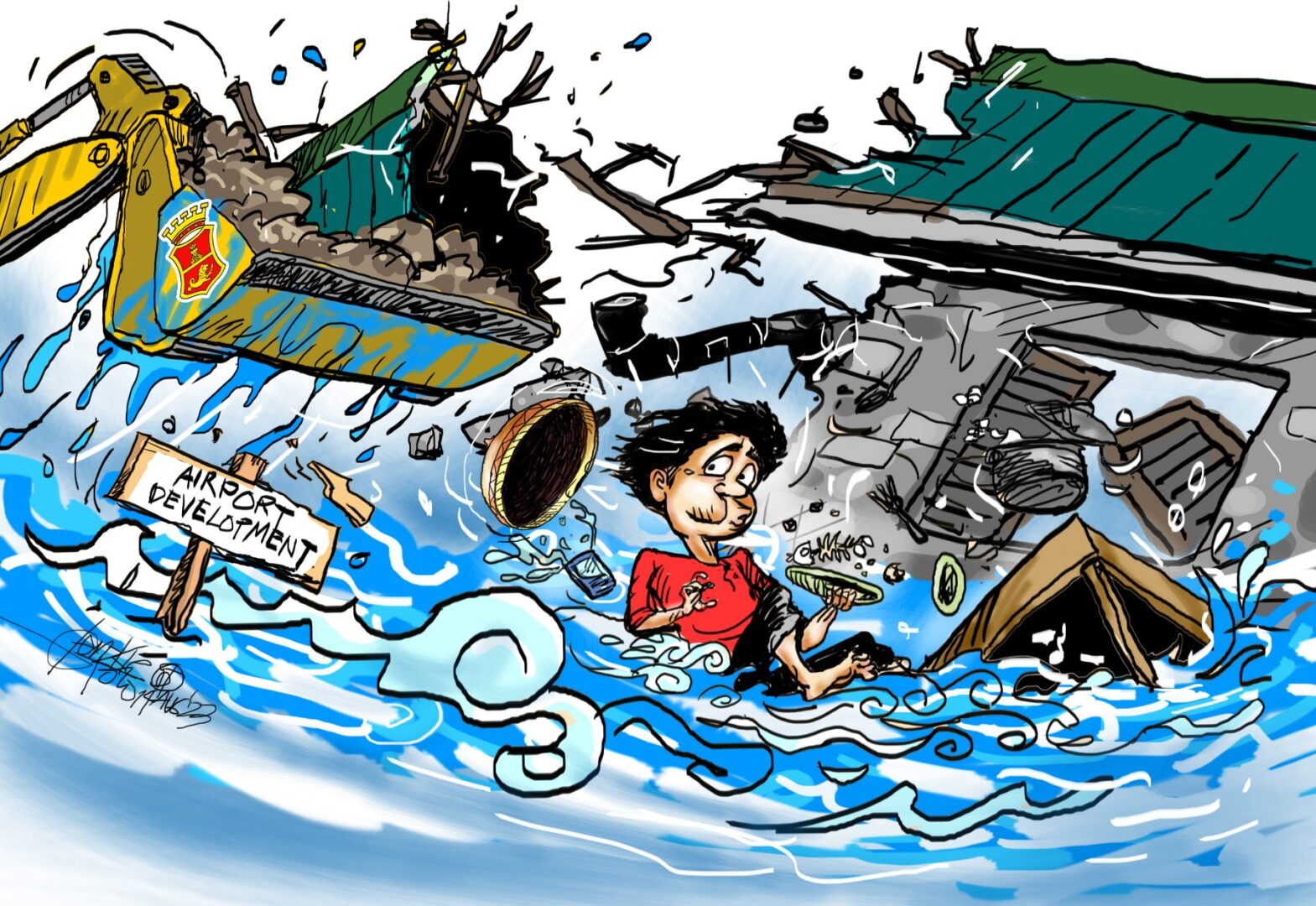San Miguel Corp.’s massive airport project appears to conflict with a pending comprehensive plan to save the environment.
SMC said in a recent statement that the land re-development in the New Manila International Airport in Bulacan is being done with international experts and partners including Dutch global maritime services expert Royal Boskalis, “to ensure that it follows the strictest international standards in environmental and social impacts mitigation.”
SMC is also implementing a massive river cleanup and rehabilitation effort covering not just the nearby Marilao-Meycauayan-Obando river systems but other rivers throughout Bulacan, to help address the province’s perennial flooding problem.
Bulacan and Pampanga were placed under a state of calamity last 2 August due to massive flooding and damage caused by the southwest monsoon enhanced by back-to-back typhoons “Egay” and “Falcon.”
Many towns in the two provinces were submerged for weeks and residents blamed the release of water from dams and the massive airport project for their ordeal.
“Our goal with this massive project is to rejuvenate the inundated land and repurpose it into a more productive and transformative asset for Bulacan, the country, and the Filipino people,” SMC president Ramon S. Ang was quoted as saying.
“We will stay committed to ensuring that this development uplifts the lives of our kababayans and balances progress with responsibility,” he added.
Environment watchdog Global Witness, based in Washington and London, however, had a grim depiction of the project saying construction of SMC’s new airport is causing permanent environmental damage.
Ecology roadmap
“Formed by 190 kilometers of coastline, Manila Bay’s coastal and marine ecosystems include mangrove forests, expansive mudflats, and seagrasses. The need to balance delicate marine and coastal ecosystems is recognized by the Manila Bay Sustainable Development Master Plan,” according to the group.
It added the plan was commissioned by the Philippines and supported by the Dutch government, which committed expertise and 1 million euro in funding.
“It is the latest in a long line of initiatives to preserve the bay from rising economic and climate pressures including a mandate issued by the Philippines’ Supreme Court directing government agencies to clean up, restore and preserve it,” according to Global Witness.
Yet, SMC’s airport development encroaches upon a recommended “strict protection zone” that was recognized by the Master Plan, which hosts mangroves, mudflats, and key sites of marine biodiversity the watchdog said.
“Under Philippine law, these protection zones should be closed to all human activity except for scientific studies, and ceremonial and non-extractive uses by indigenous peoples,” it added.
“However, until the Master Plan is formally ratified by the Philippine government and additional legislation passed legally identifying these specific areas in Manila Bay as ‘strict protection zones’, the site remains vulnerable,” the group ceded.
While it may not be categorized as a reclamation project as the company claimed, its effect on ecology is massive considering its size which sits in a critical inland biodiversity zone.
Its Dutch partner will likely get into trouble with its government which is very exacting when it comes to protecting the environment.
